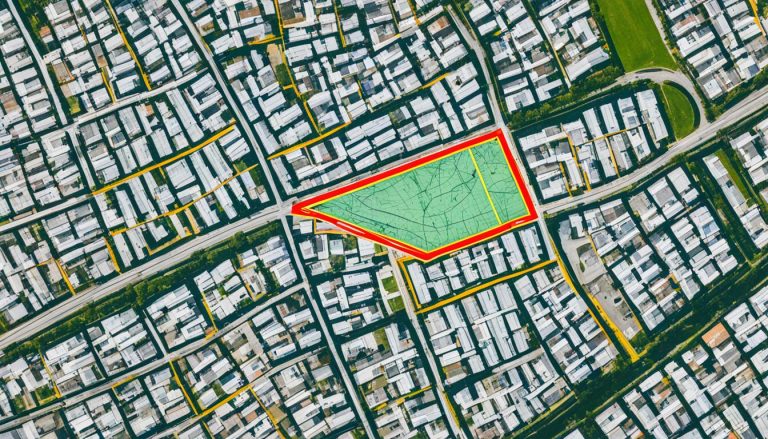Did you know the average UK home insurance costs £252 a year? Meanwhile, building insurance averages £190 annually. These figures show the key differences between home and building insurance. It’s vital to know these differences to protect your home and belongings properly.
Home and building insurance may look alike, but they cover different things. Home insurance covers your home’s structure and what’s inside it. Building insurance, on the other hand, protects the home’s structure, like walls and roofs, along with permanent features like windows and doors. Knowing these differences is important for managing risks and getting the right protection.
What is the Difference Between Home Insurance and Building Insurance?
Home insurance and building insurance are often confused with each other, but they are different. It’s important to know the differences to protect your home or investment property.
Home insurance covers both the building and what’s inside it. It protects the physical structure and your personal items and valuables. Building insurance, however, focuses on the structure itself. It covers things like the roof, walls, windows, and permanent fixtures like kitchens or bathrooms.
Building insurance covers things that can’t be easily removed without damage. This includes built-in wardrobes, kitchen units, and bathroom suites. Contents insurance is for things you can take with you, like furniture, appliances, and personal items.
| Home Insurance | Building Insurance |
|---|---|
| Covers the physical structure of the property and the contents inside | Covers the structural integrity of the property, including the roof, walls, and permanent fixtures |
| Protects personal belongings and valuables | Protects the building itself, including any “fixture and fitting” items that cannot be removed without causing damage |
| Provides broader coverage for the entire home | Provides more specific coverage for the physical structure of the building |
In summary, home insurance covers both the building and its contents. Building insurance protects the structure itself. Knowing the differences helps you choose the right insurance for your home or investment property.
Home Insurance vs Building Insurance Cost
Protecting your property can cost differently for home and building insurance. Building insurance is cheaper because it only covers the home’s structure. Home insurance, which covers both the building and your belongings, costs more.
Many things can change how much you pay for insurance. The size and age of your home, how much cover you need, and extra features like accidental damage protection affect the price. It’s important to look at different quotes to find the best deal for you.
| Coverage | Home Insurance Cost | Building Insurance Cost |
|---|---|---|
| Dwelling Protection | £500 – £1,500 per year | £300 – £800 per year |
| Contents Cover | £200 – £800 per year | Not Included |
| Policy Coverage | Comprehensive Protection | Structural Integrity Only |
Generally, the cost of building insurance is cheaper than home insurance. This is because it only covers the home’s structure. Home insurance also protects your belongings inside the home.
Choosing the right insurance means thinking about what you need and your budget. Knowing the differences in coverage and cost of home insurance and building insurance helps you make a smart choice. This way, you can make sure your property is well protected.

Does Home Insurance Cover Building Insurance?
Many homeowners wonder if home insurance covers building insurance. The answer varies by policy and provider. It’s not a simple yes or no.
Often, home insurance does cover building insurance, known as dwelling cover. This protects the property’s structure, like walls, roof, and foundation. But, not all policies include it. Homeowners might need to buy it extra or as a standalone policy.
To see if your policy covers building insurance, check the policy details. Some policies combine building and contents cover. Others sell them separately. It’s key to know what your policy covers to protect your property fully.
If your policy doesn’t cover building insurance, you might need to buy it extra. This is crucial for older homes or those in disaster-prone areas. It helps protect the structure from damage.
| Coverage | Home Insurance | Building Insurance |
|---|---|---|
| Property Protection | ✓ | ✓ |
| Dwelling Cover | ✓ | ✓ |
| Contents Insurance | ✓ | – |
| Policy Inclusions | Varies | Structural Integrity |
In summary, home insurance might cover building insurance, but it’s not guaranteed. Homeowners should check their policy details. If needed, consider buying separate building insurance to protect your property.

Landlord Building Insurance: Protecting the Structural Integrity
As a landlord, keeping a rented property in good shape is a key legal duty. Landlord building insurance covers damages from fires, floods, or vandalism. It’s vital for landlords to have this insurance to keep the property safe for tenants.
Though not mandatory, most mortgage lenders want landlords to have this insurance. It protects the landlord’s investment and keeps the property safe for tenants. With landlord building insurance, landlords can meet their legal duties and keep their properties in good condition.
Landlord building insurance covers many risks, including:
- Damage from natural disasters like storms, floods, or earthquakes
- Fires or explosions that harm the building’s structure
- Vandalism or intentional damage that affects the property
- Subsidence, heave, or landslip that weakens the foundation
By getting landlord building insurance, landlords keep their properties safe. They also meet their legal duties to tenants. This insurance protects the building’s structure, giving peace of mind to landlords and tenants alike.
Landlord building insurance also covers the cost of temporary housing for tenants if their home is made uninhabitable. This ensures landlords can keep providing a safe place for their tenants.
Contents Insurance: Safeguarding Removable Items
Protecting your home is crucial, and contents insurance is key. It covers your personal items like furniture and valuables, not just your home’s structure. This insurance is vital for those with lots of portable items or expensive goods.
It shields against theft, fire, and accidental damage. If your items get lost or damaged, you can get money to replace or fix them. This is great for people with many valuable items.
Contents insurance isn’t a must-have, but it’s worth thinking about. Homeowners and tenants can use it to protect their stuff. This includes things like gadgets, clothes, and other valuable items.
When picking a policy, check the details carefully. Think about how much coverage you need, the excess you’re okay with, and any exclusions. This ensures your needs are covered.
| Coverage | Explanation |
|---|---|
| Theft protection | Covers the cost of replacing items stolen from your home. |
| Accidental damage | Provides compensation for items accidentally damaged within your home. |
| Fire and smoke damage | Protects your belongings in the event of a fire or smoke-related incident. |
| Portable items | Extends coverage to your personal belongings when you take them outside your home. |
With contents insurance, you can rest easy knowing your stuff is safe. It’s a smart move for protecting your home and valuable items.

Additional Types of Home Insurance
Standard home and building insurance cover the basics, but there are more options for special situations. These policies are made for properties and situations not covered by usual home insurance.
Specialised Policies for Unique Circumstances
Holiday home insurance is for homes used seasonally or for vacations. It covers the home even when it’s not lived in, like during rental periods. This ensures it’s fully protected.
Student contents insurance is for students living away from home. It covers their personal items in university or rented places. It’s a great way to protect their belongings.
Unoccupied property insurance is for homes left empty for a long time. This could be between tenants or while the property is for sale. It makes sure the empty home is still protected.
Listed building cover is for homes with historical or architectural value. It offers special insurance for keeping these buildings safe and maintained. This is crucial for preserving important cultural sites.
These special home insurance options show how the industry supports a wide range of unique properties. Homeowners can find the right policy for their needs, whether it’s for a holiday home, student accommodation, an empty property, or a listed building.

Conclusion
Home insurance and building insurance offer different levels of coverage. Home insurance covers both the building and what’s inside it. It protects the home’s structure and your belongings. Building insurance, on the other hand, focuses on the home’s structure. It covers damages to the roof, walls, windows, and permanent fixtures.
Homeowners looking for full protection should think about home insurance. It combines building and contents coverage in one policy. This way, you get coverage for both the home and your belongings. By comparing these policies, you can choose the best one for your needs and budget.
The choice between home and building insurance depends on what you need to protect. If you want everything covered in one policy, go for home insurance. If you mainly care about the home’s structure, building insurance might be better. Think about your situation and what you need to decide on the right insurance.
FAQ
What does home insurance cover?
Home insurance covers the building and everything inside it. It protects against damage from fire, flood, and vandalism. Building insurance, however, only covers the building itself.
What does building insurance cover?
Building insurance protects the home’s structure, like the roof and walls. It also covers permanent fixtures like kitchens and bathrooms. Anything that can’t be removed without damage is covered.
How do the costs of home insurance and building insurance compare?
Home insurance costs more because it covers both the building and contents. Building insurance is cheaper since it only covers the structure.
Is building insurance always included in home insurance?
Not always. Some policies combine building and contents insurance. Others sell them separately. It’s important to check what your policy includes.






